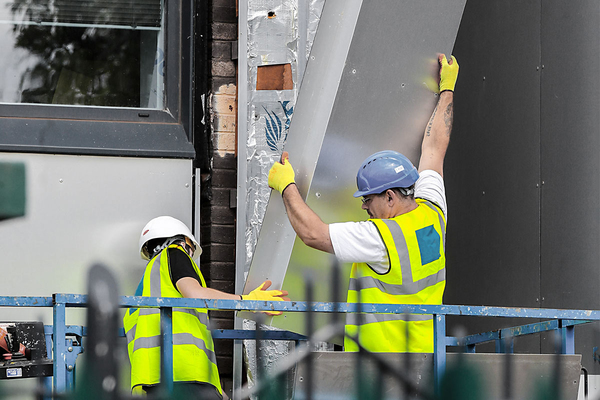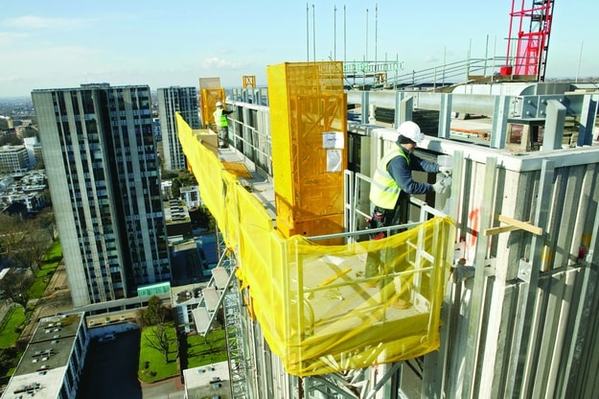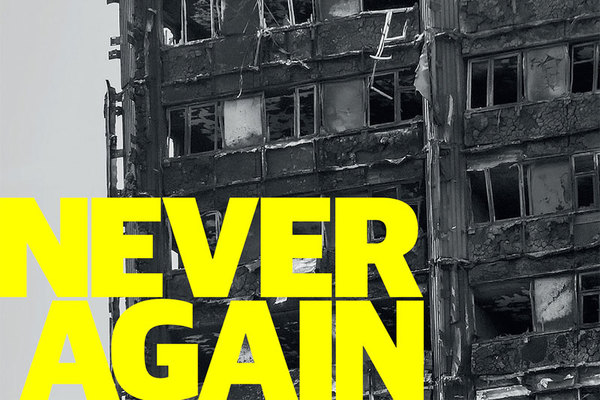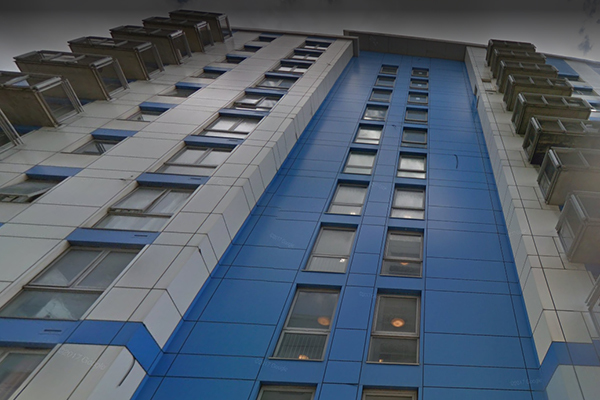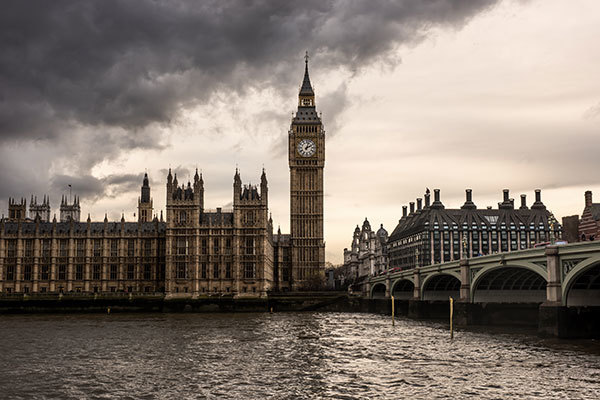You are viewing 1 of your 1 free articles
Government's fear of liability ‘limits’ cladding advice
The government has been accused of placing its “determination to avoid any liability” for the Grenfell Tower fire above the need for clear guidance over safe cladding by an industry spokesperson.
Jonathan Evans, chair of the technical committee at the Metal Cladding and Roofing Manufacturers Association (MCRMA), said the government had created a “messy stalemate” due to its failure to admit that the guidance in force at the time of the fire was “inadequate”.
He said that as a result, buildings continued to be “unquestionably risky and dangerous” as owners seek professional advice about the right steps.
The dispute centres on passages of Approved Document B – the government’s official guidance of fire safety regulations – covering cladding and insulation materials.
While passage 12.7 demands that insulation must be of “limited combustibility”, passage 12.6 sets a different standard for material on external walls, which must only meet ‘Class 0’ or ‘European Class B’ standards.
It is understood that cladding systems which have failed fire tests since Grenfell would be considered compliant with Class 0 or Class B ratings.
While regulations require a building’s walls to “adequately resist the spread of flame”, it is accepted that building owners cannot be liable for a breach of regulations if they have followed the guidance.
This has caused confusion in the industry and is slowing the removal of cladding.
In an update before Christmas, the government said cladding removal had started on only 57 of 162 blocks identified to have aluminium cladding systems.
Property owners and contractors across the country are understood to be at the beginning of lengthy legal disputes about who holds responsibility for the cladding removal, with many contracts specifying that the cladding installed must be compliant with building regulations.
Mr Evans – who is also chief executive of cladding supplier Ash and Lacy – said the government is reluctant to issue “substantive advice” to settle these disputes due to concerns about its own liability.
He told Inside Housing: “The [government’s] recent unwillingness to issue substantive advice to property owners and managers is borne largely out of its determination to avoid admitting that its guidance prior to the Grenfell fire was inadequate, and any associated liability.
“Approved Document B shows that European Class B (ie combustible) cladding was permissible and by its own admission, the law has shown that if you’ve followed the guidance, you are legally deemed to have met the regulations.
“However, large-scale tests showed that polyethylene aluminium composite material with a Class B rating is neither safe nor practically compliant with the requirements of the regulations.
“There is little advice on what property owners should do in certain circumstances, or even the bare minimum clarification that [polyethylene aluminium composite panels] should be removed from tall buildings regardless of the underlying insulation…
“In the meantime, these buildings are unquestionably risky and dangerous if not for vigilant monitoring and awareness by the fire authorities.”
The Building Research Establishment tested seven combinations of cladding and insulation in its laboratory over the summer on behalf of the government. Of seven systems tested, four failed to prevent the spread of fire.
However, the official government advice was to put interim measures in place and “seek professional advice” rather than immediately remove the products.
It is understood the government is claiming internally that the plastic part of the cladding should be regarded as ‘insulation’ or ’filler’ rather than cladding and is therefore covered by paragraph 12.7 of the guidance. However, this was not the view of experts contacted by Inside Housing.
Mr Evans added that Dame Judith Hackitt’s interim report into building regulations, published before Christmas, does not properly address the deficiencies in the guidance. He said the MCRMA had issued its own guidance while the “messy stalemate” continues.
Never Again campaign
Inside Housing has launched a campaign to improve fire safety following the Grenfell Tower fire
Never Again: campaign asks
Inside Housing is calling for immediate action to implement the learning from the Lakanal House fire, and a commitment to act – without delay – on learning from the Grenfell Tower tragedy as it becomes available.
LANDLORDS
- Take immediate action to check cladding and external panels on tower blocks and take prompt, appropriate action to remedy any problems
- Update risk assessments using an appropriate, qualified expert.
- Commit to renewing assessments annually and after major repair or cladding work is carried out
- Review and update evacuation policies and ‘stay put’ advice in light of risk assessments, and communicate clearly to residents
GOVERNMENT
- Provide urgent advice on the installation and upkeep of external insulation
- Update and clarify building regulations immediately – with a commitment to update if additional learning emerges at a later date from the Grenfell inquiry
- Fund the retrofitting of sprinkler systems in all tower blocks across the UK (except where there are specific structural reasons not to do so)
We will submit evidence from our research to the Grenfell public inquiry.
The inquiry should look at why opportunities to implement learning that could have prevented the fire were missed, in order to ensure similar opportunities are acted on in the future.
